Category: Food Plots
Why We Prefer Food Plot Blends In Warm and Cool Season Food Plots
Several weeks ago, deer were browsing the tender buckwheat forage in the Green Cover Seed Summer Release. Ward Laboratories, Inc. tested the buckwheat and found it contained over 25% protein! The buckwheat that was not consumed has flowered and is now producing seed. At this stage, it’s not as palatable to deer. Not to worry! There are other species in the Summer Release that are now providing high quality forage.
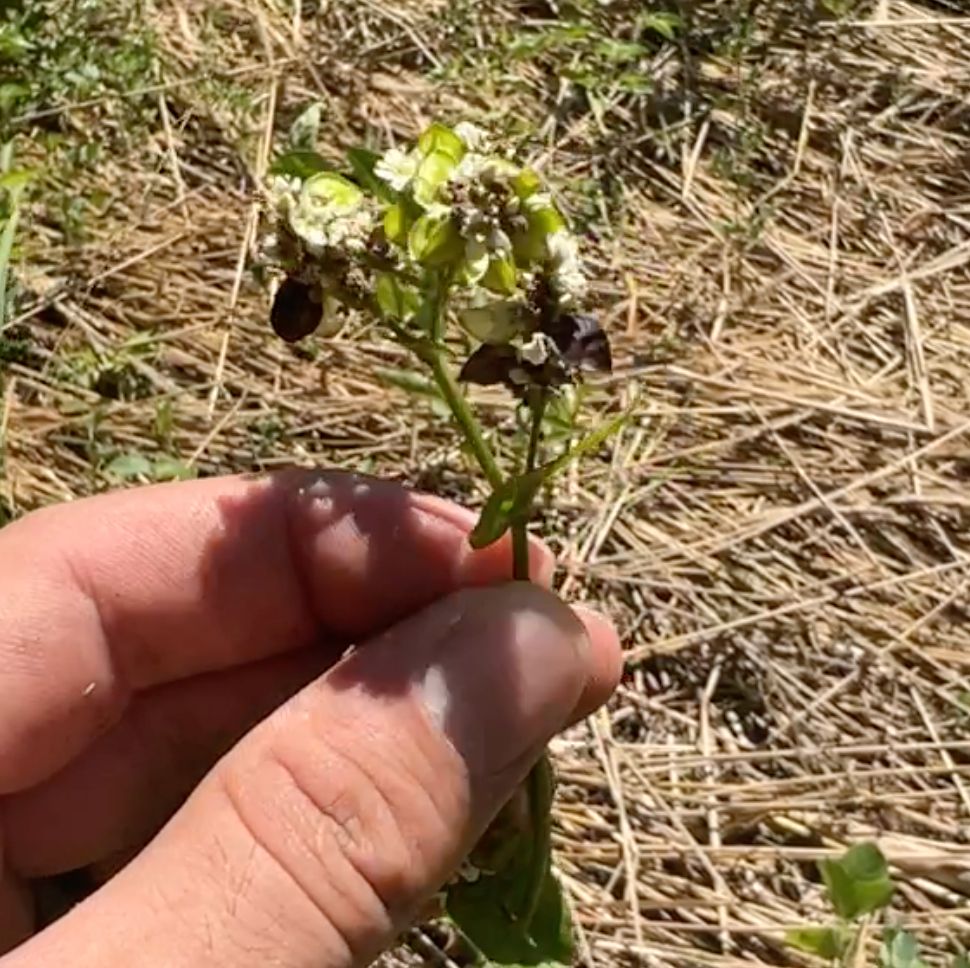
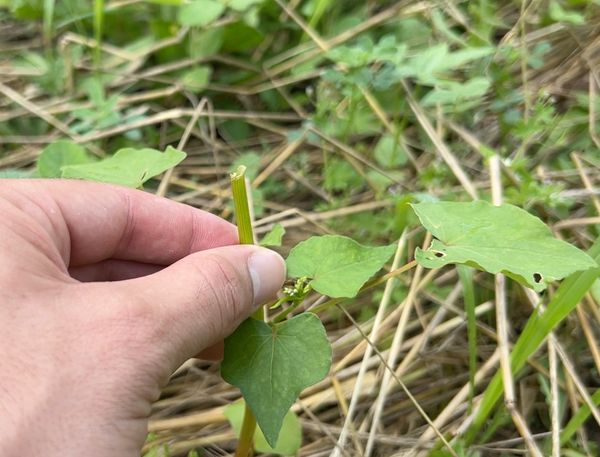
This is one reason we prefer blends of multiple species in both warm and cool season food plots. Each species is palatable and matures at a different time. Blends maximize the forage potential of each plot creating a buffet for deer and other critters! over 25% protein! The buckwheat that was not consumed has flowered and is now producing seed. At this stage, it’s not as palatable to deer. Not to worry! There are other species in the Summer Release that are now providing high quality forage. This is one reason we prefer blends of multiple species in both warm and cool season food plots. Each species is palatable and matures at a different time. Blends maximize the forage potential of each plot creating a buffet for deer and other critters!
Broadcasting Seed Into Small “Hidey Hole” Food Plots
Braden and Josh helped broadcast several hidey hole food plots yesterday before the rain. They broadcasted Green Cover Seed Browse Pressure Release at twice the drilling rate. This higher rate ensures a good stand!
We often broadcast seed into standing vegetation but spread at least twice the seed as normal and then realize there may not be a great stand. For good success the seed needs to make seed to soil contact. There will be a low survival rate if the seeds land on vegetation, etc., rather than directly on soil. It’s best to broadcast the seed just before or during a rain! This will help by splashing dirt and covering the seed and insuring there’s adequate soil moisture.
Sometimes we create a firebreak around the plot and burn the existing vegetation when it’s dry/dead and then broadcast the seed. This is a good technique that still increases the amount of organic matter as it doesn’t harm the roots, but does create a clean seed bed and often a very good stand of forage! This technique was used successfully by Danny and Bradley in this video.
For more in-depth tips on how to use hand tools or a broadcast spreader to create a small food plot, check out this video.
2 Food Plot Planting Tips: Calibrating and Seed Depth
Planting tips:
Seed size will vary from year to year due to the growing conditions. To ensure you plant at the correct rate, calibrate your drill before each planting season.
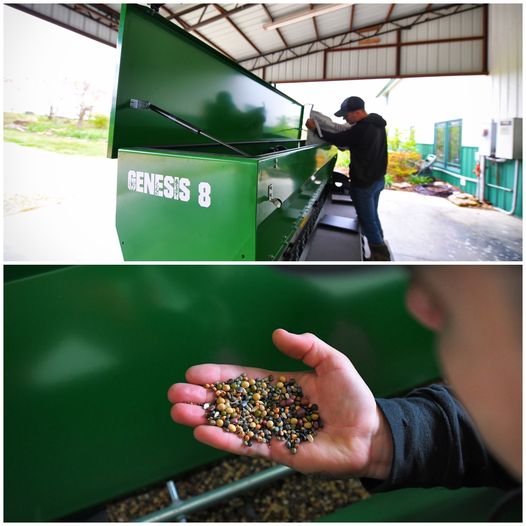
Stop the tractor and check seed depth. Soil moisture can vary from plot to plot and change throughout the day. We get off the tractor multiple times while planting each plot.
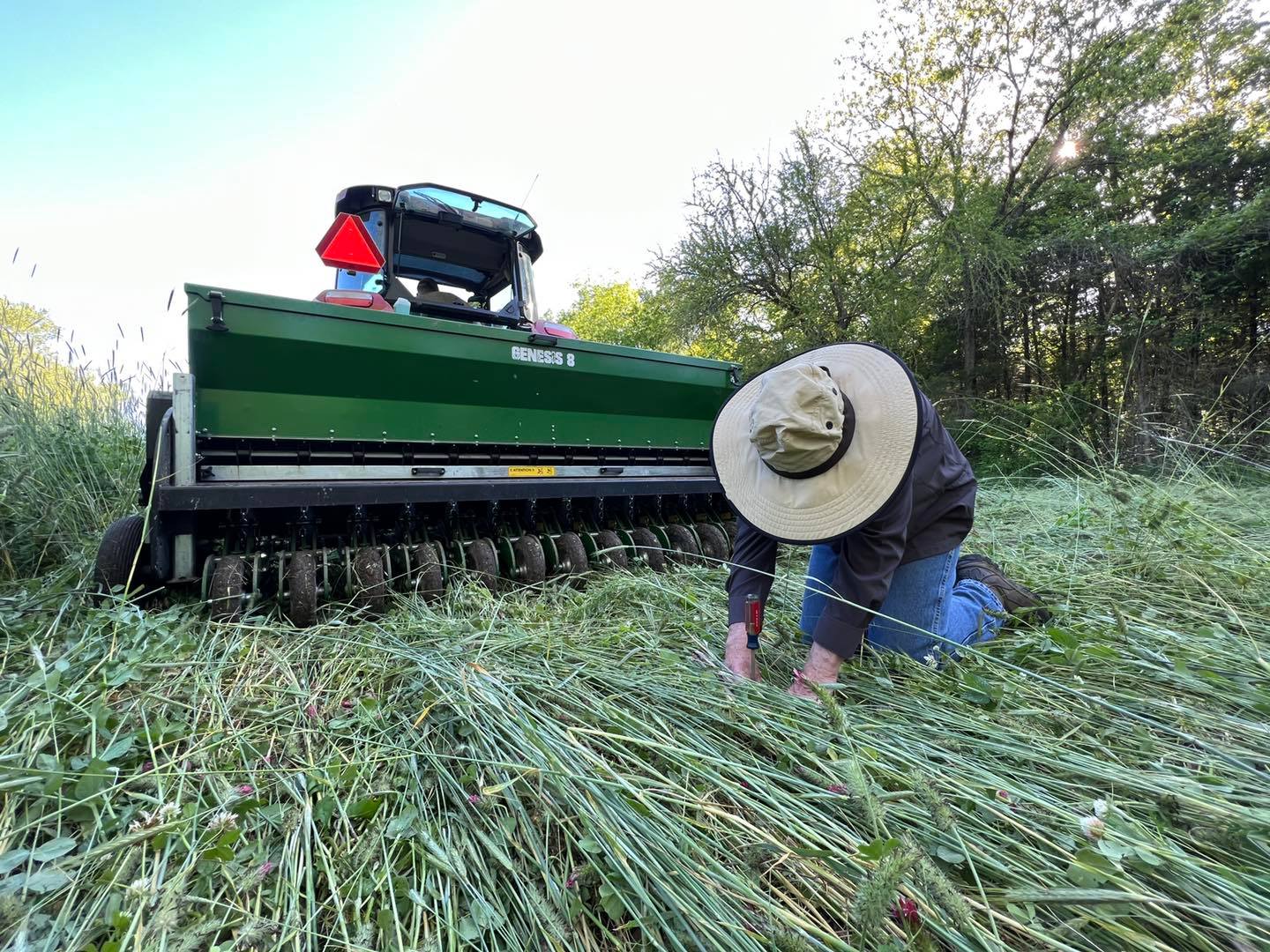
Food Plot That Can Do More!
There is more to the Green Cover Food Plot blends than attracting and feeding deer! For example deer find sunflower foliage palatable and it’s nutritious. Sunflowers have a very large fibrous root system that adds a lot of organic matter to the soil! It’s also excellent at extracting zinc from the soil and making it available to other plants (through a complex relationship with microbes).
Buckwheat is very palatable to deer, and it’s leaves have about 16% crude protein, and decomposes quickly – making readily available nutrients to the next crop. Buckwheat exudates (carbonic acid that “leaks” from the roots) makes phosphorus available to other plants. Knowing that there’s almost always plenty of phosphorus available – everywhere – but that it’s not in a plant-available form, almost all the blends I design include buckwheat.
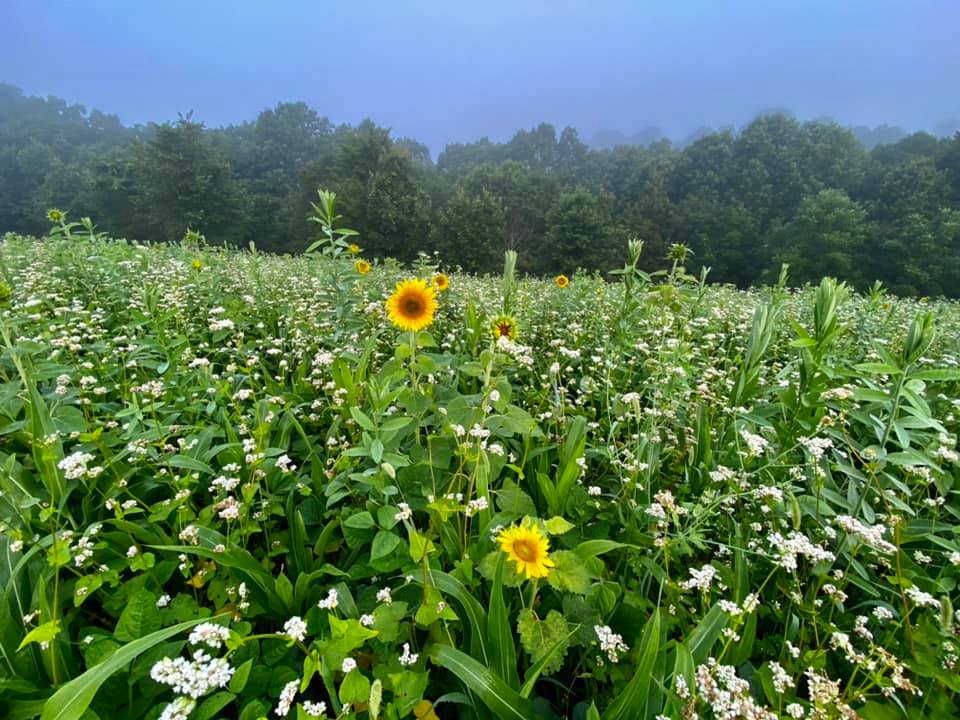
Determining the mission for the blend is extremely important. There is no magic bean or species, but rather good blends of plant species that can work together to improve the soil’s health and meet the landowner’s mission – whether that’s to attract and feed deer, cows, or humans.
This is why cover crops should be used in every ag field – in rotation with corn, soybeans, rice, etc. This can significantly reduce the need for synthetic fertilizers, herbicides, insecticide, fungicides, etc., while making farmers more profitable and improving the air, soil and water qualities at their farm and for the planet!
I’m very excited about how the Release Process can be used to help mankind.
Enjoy Creation!
Grant
Planting Into Standing Green: Healthy Soil, Healthy Food Plots!
Planting into a standing, green crop has many benefits! The cool season crop we planted late last summer has protected the soil and fed critters all fall, winter and spring.
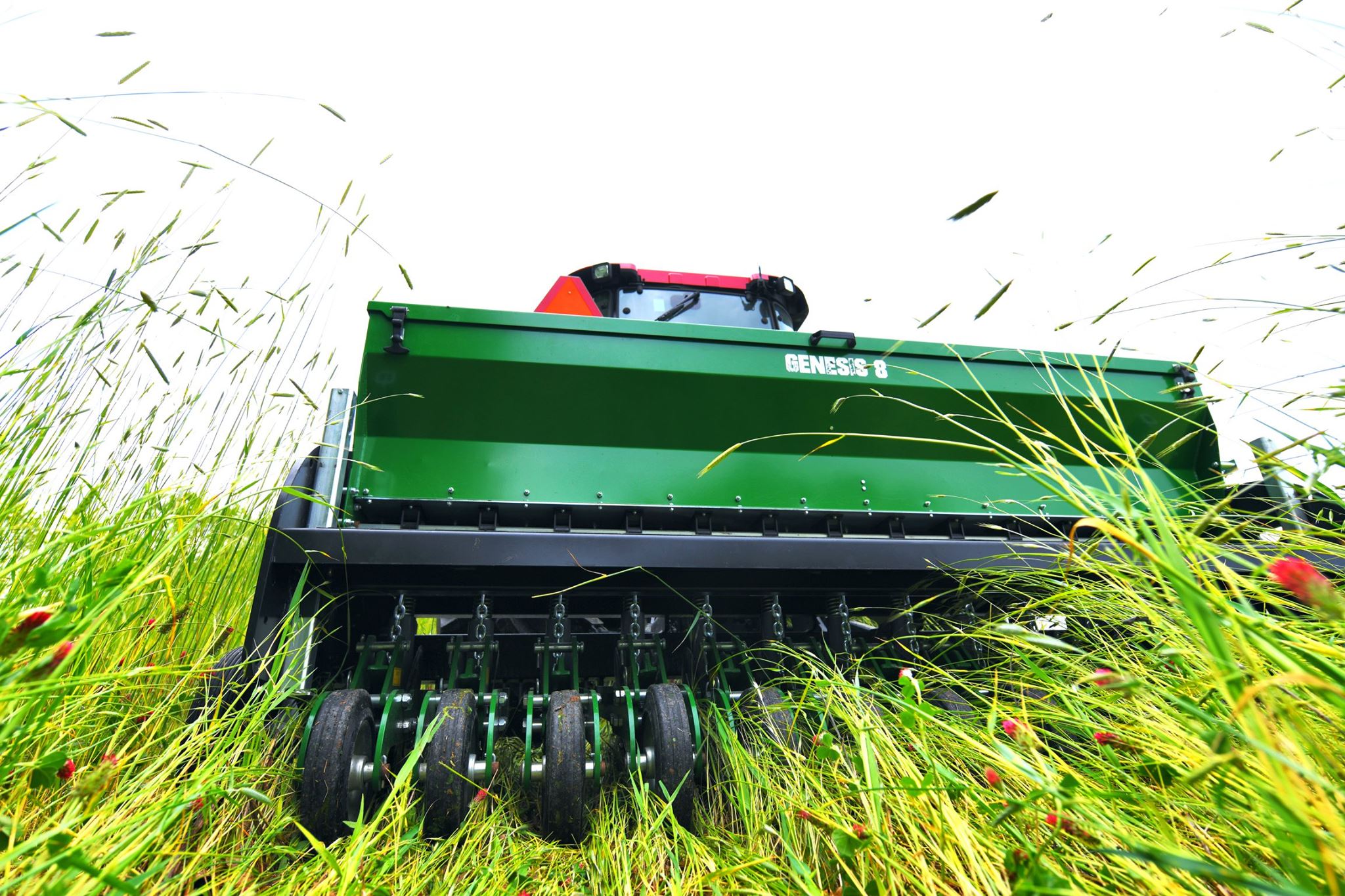
The forage has now bolted and produced lots of biomass on top of the soil and below (roots). This results in the perfect time release fertilizer for future crops. The new crop will begin growing in a perfect environment and provide forage for critters during the growing season.
The table is never cleared, which is great for critters above and below the soil. This is what we call the Release Process™.
We will share more food plot updates as we continue planting and improving the soil health at The Proving Grounds.
Enjoy creation,
Grant
How to Grow Great Food Plots and Improve Soil Quality
I’ve been planting food plots for MANY years. Initially, I planted food plots using the traditional process of breaking the ground and either broadcasting by hand or using a planter. Then I started planting no-till food plots as it reduced that extra step of plowing. On moving here to Southern Missouri, the choice to use no-till was the only choice because our rocky soils are basically impossible to till/disk.
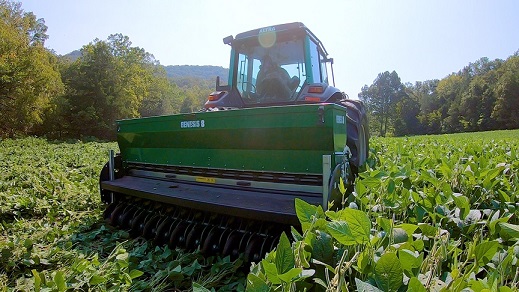
These days you’ll find us putting in our food plots with the Genesis No-Till Drill. The Genesis has been a great tool for me!
As time passed the additional benefits of a no-till food plot became clear. I continue learning and the best system – what I’ve done the past two years is to plant green – which means to plant into the standing crop.
This spring I’ll plant into the crop that’s maturing now. I’ll drill into it when the cereal rye seed heads are forming in the end of the green stalk. This is called the boot stage. You’ll notice the stalk swelling or pregnant with a forming seed head that’s not or barely visible.
Then after the planted seeds germinate and the standing crop’s cereal rye’s seeds are in the dough stage – formed but full of moisture – pop when squeezed I crimp the fall crop. This process produces the most weed suppression and soil health improvement.
The previous crop must be terminated somehow or it will slowly die and then it will be late planting the new crop. I use a Goliath crimper to terminate unless there’s a known weed issue.
If you don’t yet own a crimper, you can spray the crop just before you plant. Most folks use glyphosate – which is a better choice than turning the soil for the soil’s health and weed suppression. If there’s already a big weed issue, you will need to spray.
If the previous crop is thick, when it’s crimped it makes a huge amount of mulch that will suppress weeds and preserve the soil’s moisture like mulch in flower beds, gardens, etc. This mulch decomposes slowly and is a great slow release fertilizer as the decomposing plants (don’t forget the tons of roots below the soil) pull the exact variety of nutrients from the soil that other plants need. This is another reason I always plant blends that include a lot of species! Different species will extract different nutrients from the soil and release a mild carbonic acid to free up more nutrients. The Release Process doesn’t happen overnight, but I haven’t added/paid for any fertilizer in 7 years! Over time, I saved enough for the crimper and much of the drill.
We’ll soon be sharing more in videos about planting to show this process. As I’ve learned and advanced these steps, I call this the Release Process – as I’ve been amazed at how much of the soil’s potential has been released in a few years! The soil at my place is now literally dark and smells rich like Iowa soil and I live in the Ozark Mountains near Branson, MO!
This spring I’ll be planting a blend with 10+ different species that I’ve learned work together to rapidly improve soil health. I’ll get this from GreenCoverSeed.com and it will cost about $55 per acre plus shipping. They ship a huge volume so shipping prices are good. This seed cost per acre is a much better price than I’ve found elsewhere. I don’t believe the wildlife products are on their site yet. I helped them develop this blend based on my experience with food plots and their vast experience with more than 150 species of forage and grain crops.
By planting these blends and getting seed from Green Cover versus companies with fancy bags with a big buck on the front, there’s much more savings! Many food plot companies’ products are $100+ per acre. Green Cover – sales millions of pounds of cover crop farmers – has way better prices – typically about $50 per acre.
I’m very confident you will enjoy and appreciate the Release Process and watching the soil and deer at your place improve in quality!
Enjoy creation,
Grant
Working To Improve the Deer Herd and the Soil: Planting Food Plots with The Release Process
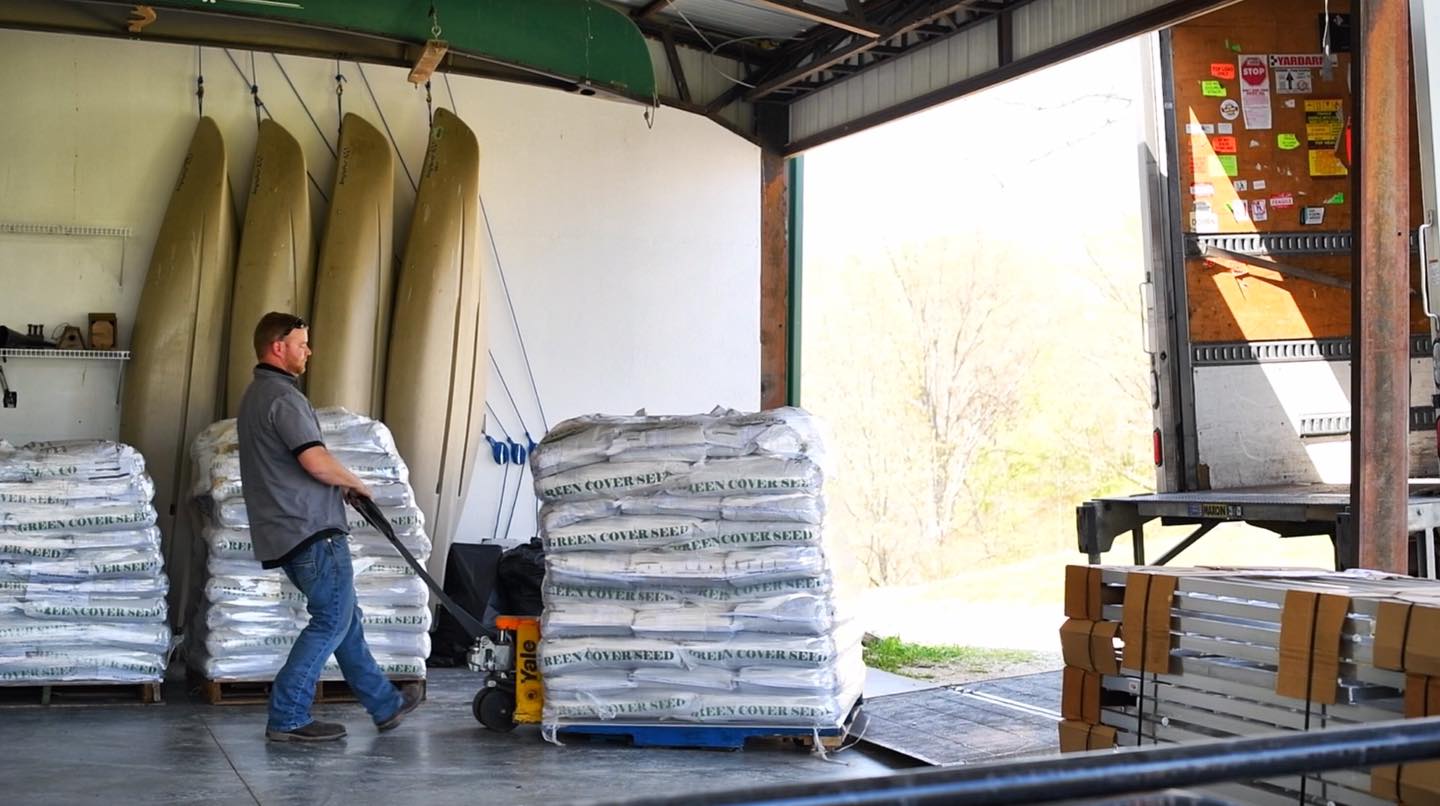
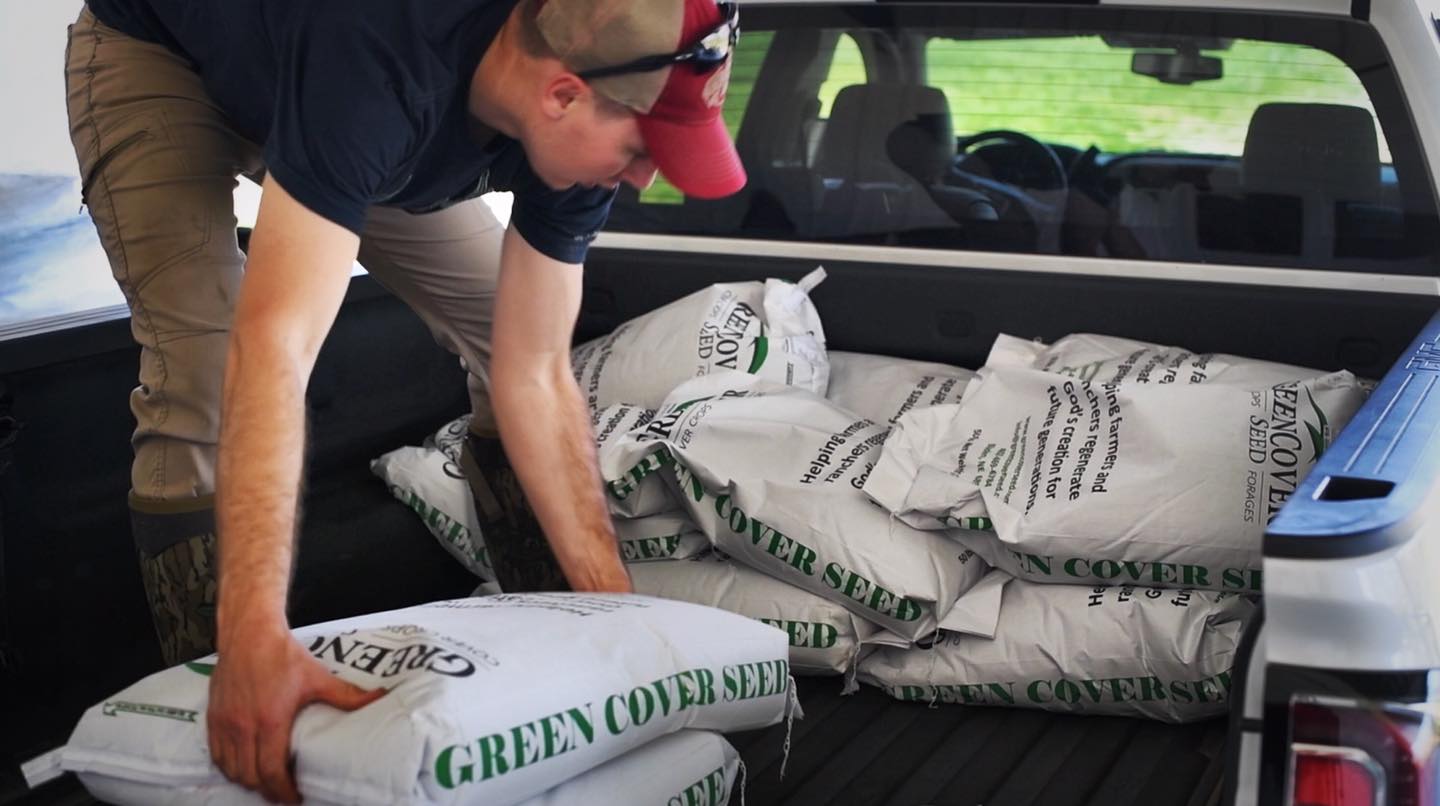
We’re monitoring soil conditions daily/watching the weather and hope to be planting soon. We want to make sure the soil temperature is warm enough. Here we can get away with planting earlier when planting green; when we’re not using as much synthetic fertilizer or herbicides or other products. Here at The Proving Grounds we have a lot of soil life — earthworms and bacteria. And they’re activity and respiration warms up the soil.
Soil health can be extremely complicated. But we can break it down really simply. It’s important to always keep the soil covered. Bare soil, naked soil, can be eroded. It can get too hot or too cold and it doesn’t hold soil moisture.
There are benefits to having a living root in the soil as many days as possible. And that living root, again, is using the top of the plant – photosynthesis – to pump very valuable foods and other items into the soil for the soil biology. And in turn, the soil biology is making the plant healthier.
At least during a portion of the year, there should be a large variety of plants having different root sizes and depths and, really important, different leaf sizes and different leaf heights. This will serve to capture all that sun before it hits the ground.
That diversity of plants also has different root structures. Some of them will be very deep and strong which will break up hard pans and allow moisture to move up and down through the soil as needed.
Following some simple principles in your food plot can mean you’ll have way healthier soil, healthier plants, larger deer and attract more deer in front of your stand.
It all starts with the simple soil health principles. Now, can you do this with synthetic inputs? Yes, of course you can. But, there’s a cost to that.
Tillage always means erosion; synthetic inputs usually end up in somebody’s water system somewhere. Following the natural system I call “The Release Process” is the healthiest and, in the long run, the least expensive process.
Check out Green Cover Seeds for the food plot blends we will be using this year. We’ll be bringing you more videos this spring with details on how to establish the best food plots at lower cost and that are better for the soil, the environment, and the wildlife!
New Hidey Hole Food Plot At Edge of Bedding Area and Timber
We’re very excited about this new hidey hole food plot. It will be located on top of a ridge on the edge of a hardwood timber and a south facing slope/bedding area.
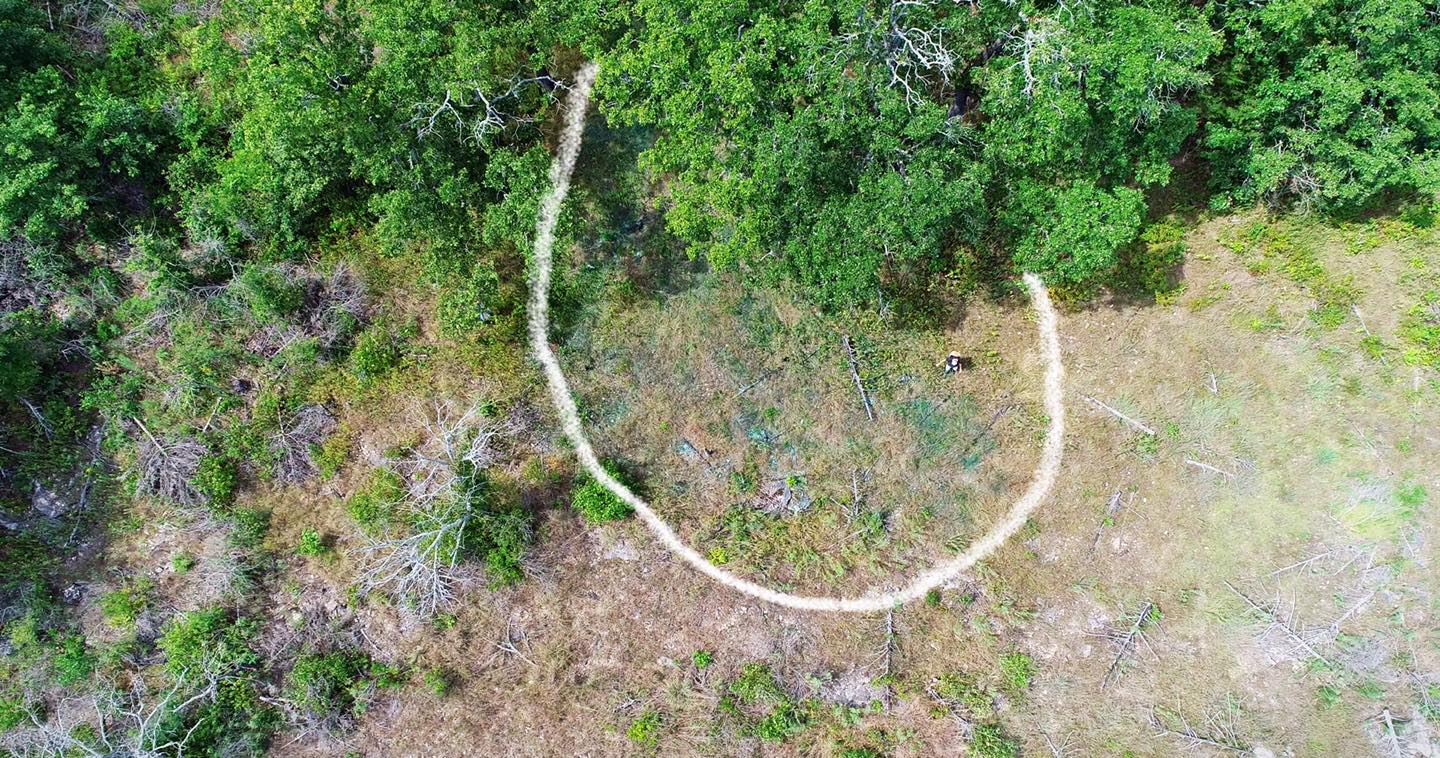
This is a great travel corridor. Deer already naturally travel across the saddle in the ridge and along the edge of the timber and bedding area.
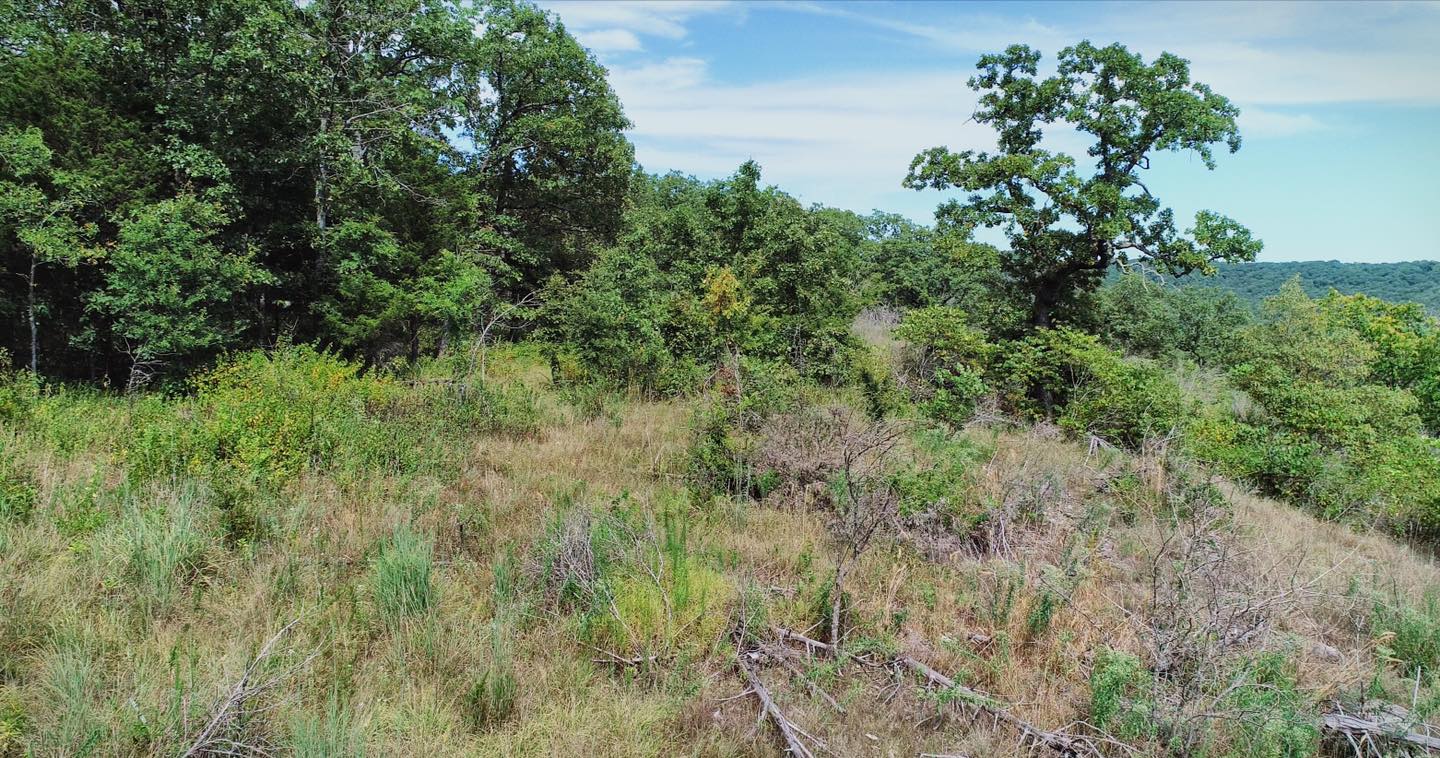
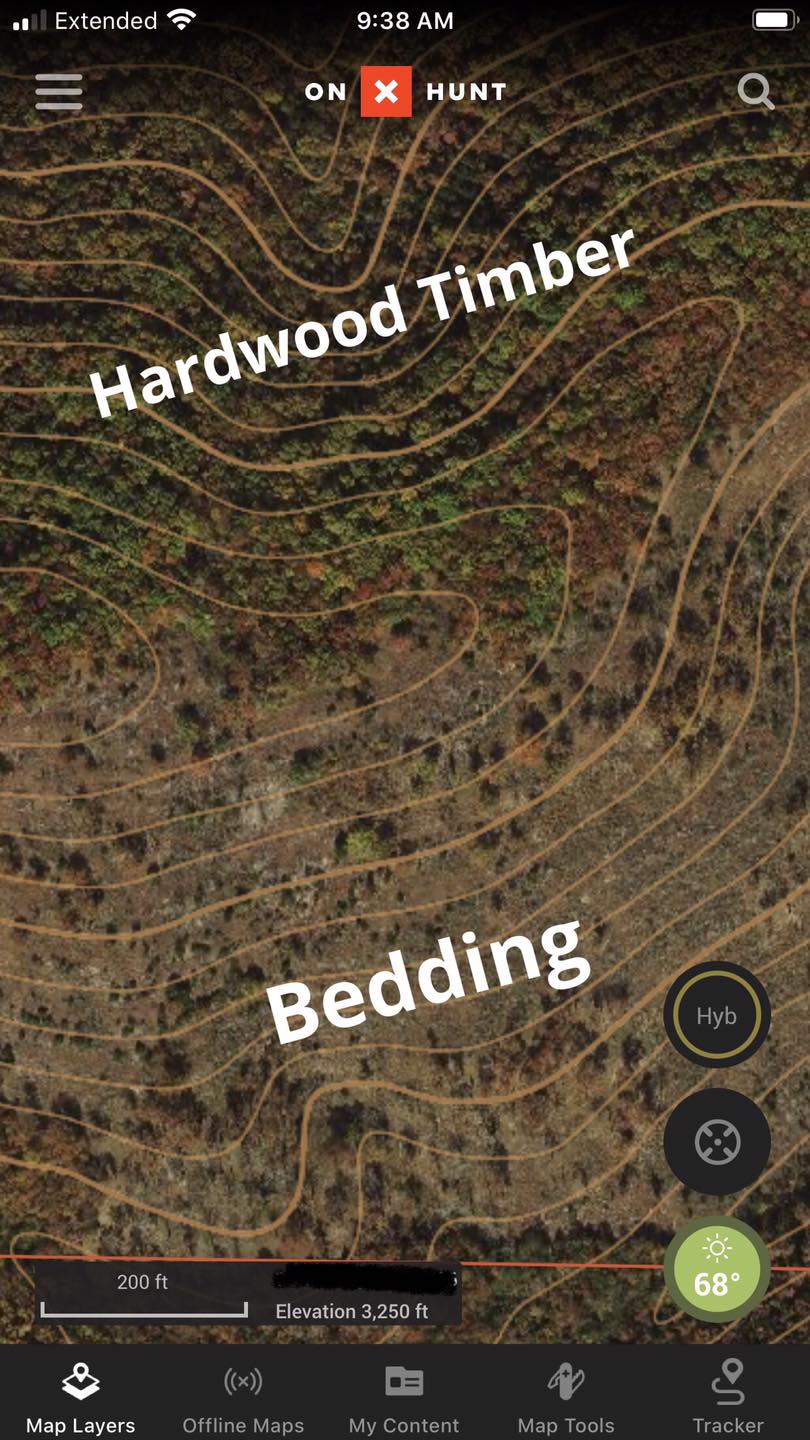
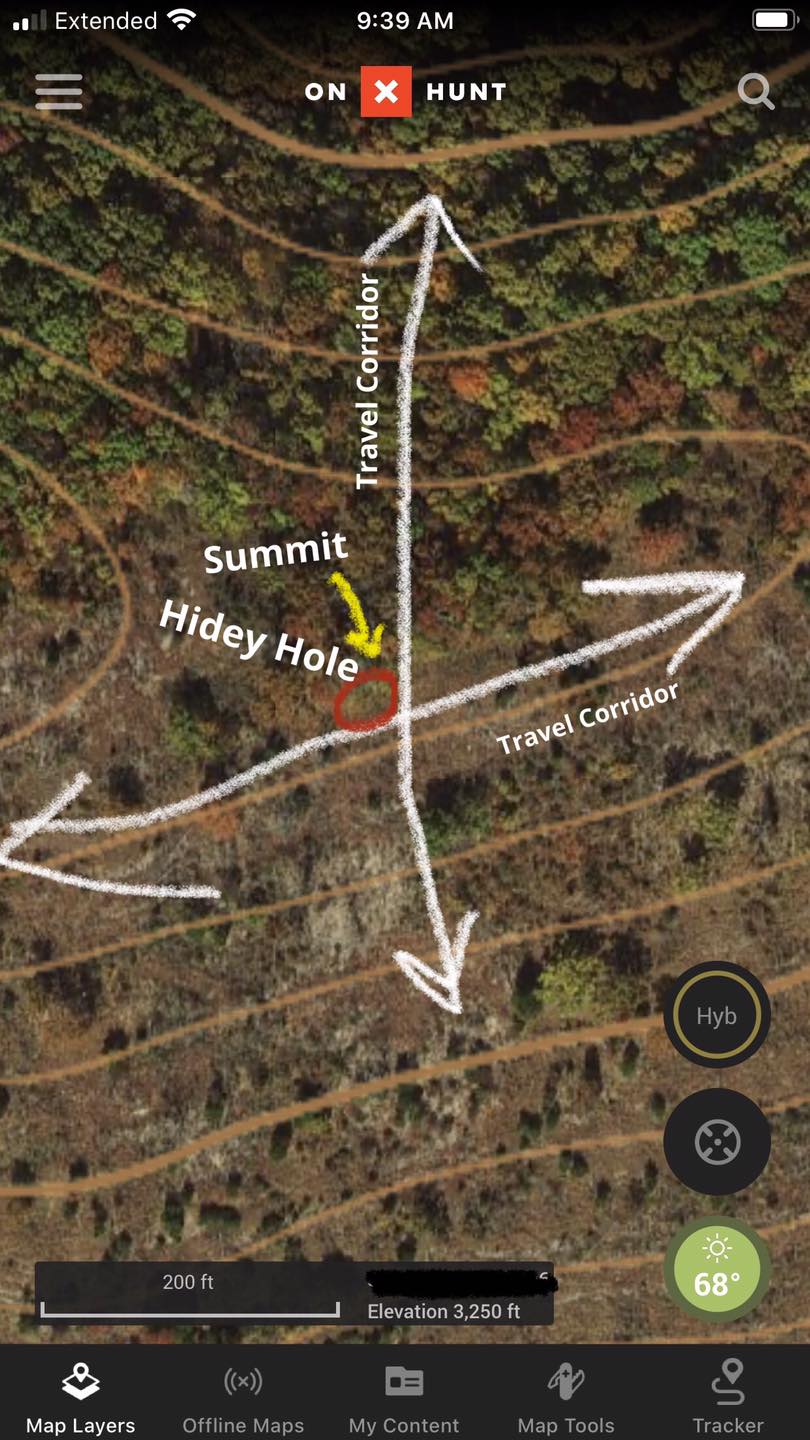
Adding an attractive food source will make this an ideal hunting location! We are simply terminating the vegetation with backpack sprayers and will broadcast Eagle Seed Fall Buffalo Blend seed right before or during a rain.
Farming for Worms! Food Plots Need Worms for Better Soil
One thing I really enjoy is seeing how many worms are in our food plots. Why? Because there is a correlation between the number of earthworms in the soil and therefore deer herd quality. That’s because earthworms really improve the soil, making forage more nutritious…so more earthworms, bigger antlers per age class. Here’s a quick check of the earthworms in this food plot and a brief analysis of what it means.
Food Plot Q & A: Can I plant soybeans into a recently burned field?
I received a question from a client about planting spring food plots into a recently burned field. If you’re considering the same question or making plans to do a prescribed fire, here are a few points to make this a successful food plot:
Planting soybeans (or any crop) into a burned field is fine. The black surface will result in the soil temperature warming faster there compared to fields covered with forage or that have light-colored soil. This can be an advantage during the spring. The added heat would be an issue if the planting date is when the soil and air temps are high. However, the beans should make a canopy before the temperatures are warm enough to damage forage. A 90 degree outside air temperature can mean surface temperatures are well over 100 degrees on a black surface. Burning will reduce much of the above ground organic matter and therefore some of the moisture retention and weed suppression advantages of having the terminated vegetation (mulch) in the field will be lost. However, the past crop’s roots are still providing lots of organic matter as well as holding the soil in place.
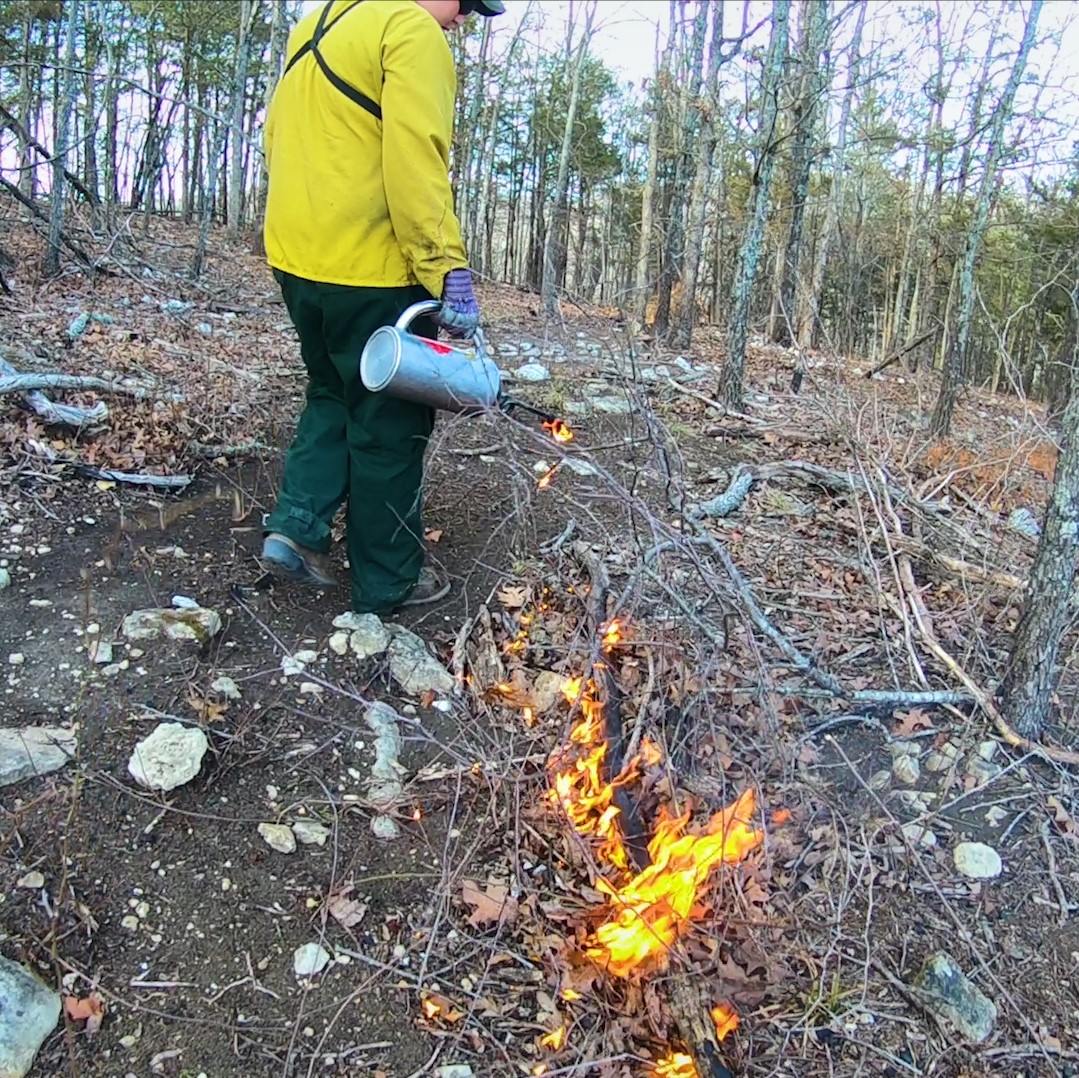
Before initiating a burn on your property, please get the proper training. Use a backing fire when burning through hardwood timber. Backing fires are less intense and won’t cause as much damage to mature trees. Rotating areas to burn will create a mosaic pattern of habitat which is very productive! In your fire training you will have learned that it is of paramount importance to consider where the smoke will go! The best practice is to burn during a day with a great ventilation rate (the National Weather Service has a website with fire data). A good ventilation rate means the smoke will rise and move on quickly. This is much safer than burning when the smoke hangs in one area which can, in the worst-case scenarios, cause traffic accidents for which you can then be held accountable.
This link is to the National Weather Service’s forecast including fire weather. You should be able to refine the location by typing in your zip code or city name for an update to get current fire weather for your area.
Another website I frequently use this time of year shows the daily soil temperature. You can review it at this link, updating for your location. This is useful as I like to plant soybeans when the soil temperature is 60 degrees at 9am – the coldest time of the day for soil.



